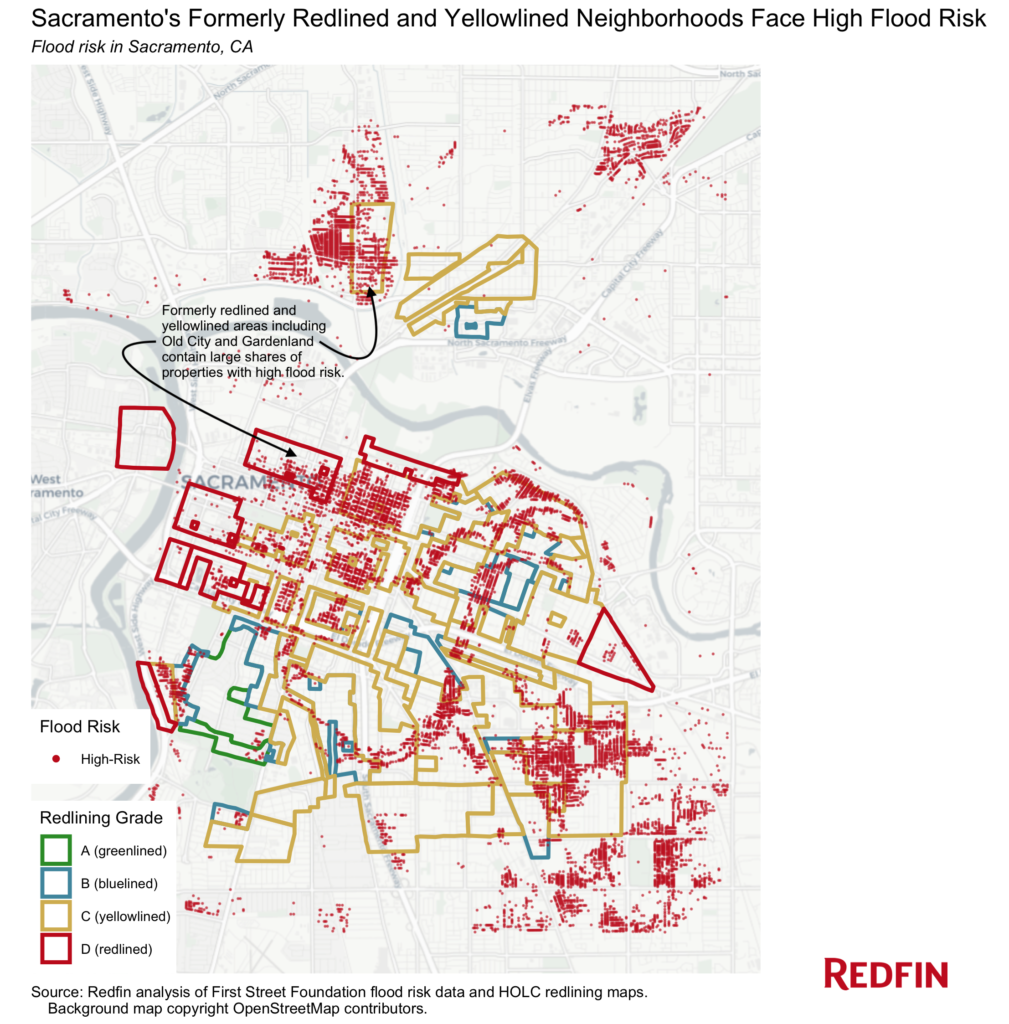 In dozens of cities across the country, maps of flood danger zones bear a striking resemblance to corresponding redlining maps of yesteryear, a study revealed. That Redfin study showed formerly redlined areas have $107 billion worth of homes facing high flood risk, which puts those neighborhoods at a 25% higher risk than other neighborhoods in the same cities, which average $85 billion worth of homes in flood zones.
In dozens of cities across the country, maps of flood danger zones bear a striking resemblance to corresponding redlining maps of yesteryear, a study revealed. That Redfin study showed formerly redlined areas have $107 billion worth of homes facing high flood risk, which puts those neighborhoods at a 25% higher risk than other neighborhoods in the same cities, which average $85 billion worth of homes in flood zones.
Illegal today, redlining was the discriminatory practice, initiated in the 1930s, wherein banks and/or lenders refused services to residents based on where they live. The residents of these redlined, "undesirable," or "hazardous" neighborhoods inevitably were people of color, research has proved. This is no accident, according to researchers at Urban Displacement, who added that Americans, especially minorities, still feel the effects of redlining. (Today, 58.1% of households in neighborhoods that were once designated undesirable for mortgage lending reportedly are nonwhite, compared with 40.4% of households in neighborhoods that were labeled desirable for lending).
According to Redfin data journalist Lily Katz, those negative and lingering effects for homeowners include a higher possibility of water damage to property and other climate-related challenges.
"In dozens of American cities including Sacramento and Chicago, formerly redlined neighborhoods have a larger share of homes endangered by flooding than neighborhoods that weren’t targeted by the racist 1930s housing policy," Katz noted. "Many of these at-risk neighborhoods remain predominantly nonwhite."
Katz cites reports from the New York Times regarding rising sea levels and increased frequency of major storms, which, the reporter says, means "families in flood-prone areas will grapple with intensifying financial and safety concerns in the years to come."

A Redfin economist annotates the issue—"Decades of segregation and economic inequality shoehorned many people of color—especially Black Americans—into living in neighborhoods that are more vulnerable to climate change," said Redfin Senior Economist Sheharyar Bokhari. “Redlining kept home values in Black neighborhoods depressed, which in turn meant there was less money invested and reinvested in those neighborhoods for decades to come.”
“The cycle continues today,” Bokhari said. “As climate change fuels rising sea levels and powerful storms, many of these neighborhoods lack the funding for the infrastructure upgrades necessary to combat flooding.”
Evidence and signs support the idea that when storms hit, communities of color often suffer the most, Redfin noted:
For example, four of the seven zip codes that faced the costliest flood damage from Hurricane Katrina in 2005 were at least 75% Black.
After Hurricane Harvey hit Texas in 2017, Black and Hispanic Americans were about twice as likely as white Americans to say that they had fallen behind on their mortgage payments in the wake of the storm.
Formerly redlined areas are also an average of 5 degrees hotter in the summer, in part because they have more pavement and fewer trees to cool the air—and soak up water when flooding occurs.
The full study is available at redfin.com/news.

 DSNews The homepage of the servicing industry
DSNews The homepage of the servicing industry









